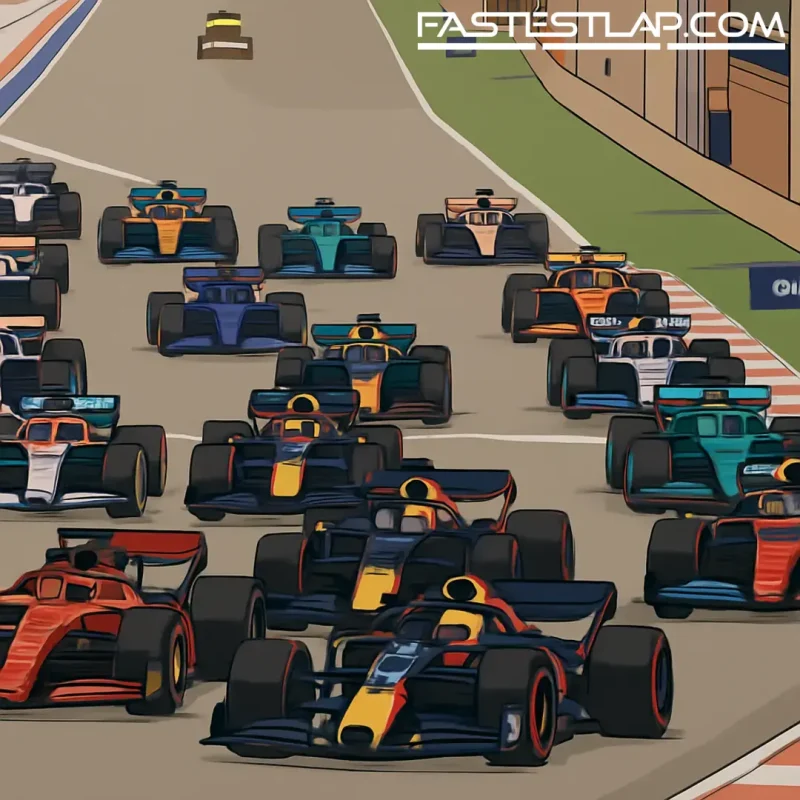The curtain is about to drop on Formula 1’s ground‑effect era. Four seasons after those sculpted floors and big tunnels hit the track at the 2022 Bahrain Grand Prix, the sport is weeks away from boxing up the concept again and turning to an active-aero future in 2026. So how will this chapter be remembered?
If you ask the people who’ve lived it, the verdict is kinder than the early pre-season jitters ever suggested.
“I remember the panic before launch,” Visa RB team principal Laurent Mekies recalled with a grin. “A lot of us thought the racing would be too samey, too restricted. It didn’t happen. We’ve had four years of proper competition.”
Ground effect had been outlawed since 1982, with F1 spending almost four decades building downforce over the car. That style made monstrous peak performance, but it also left such dirty air that racing often turned into a chess match with few passes. The 2022 reset flipped the equation: the floor did the heavy lifting, the wake calmed down, and cars could transition from following to attacking without the front wing wilting. Early on, you could see drivers running in formation at speeds that used to cook a tyre in two corners.
It wasn’t painless. The infamous ‘porpoising’ saga of 2022—cars hopping on straights as the floor stalled and reattached—caught even the powerhouses off‑guard and forced FIA intervention on safety grounds. But, as Haas boss Ayao Komatsu points out, the paddock adapted fast.
“It just shows what this sport can do,” he said. “In 2014 some teams struggled to do a lap. In 2022, almost everyone was bouncing. And then, very quickly, people found solutions. On the power unit and chassis side, it’s been a big demonstration of capability.”
With development freedom came familiar arms races. Wake grew again as teams packed more performance into the cars, while wet races exposed a new headache: ground-effect floors throw up brutal spray, slashing visibility when the heavens open. Nobody will miss the onboard shots of drivers guessing braking points in a grey wall.
Still, the on-track product did what it said on the tin. Ferrari’s Fred Vasseur didn’t try to oversell it—“for sure, McLaren is dominating,” he quipped about the current pecking order—but he was quick to underline the baseline target had been hit.
“Budapest this year? Four teams, six cars within a tenth in qualifying,” Vasseur said. “That’s real competition. And remember, this is the first full generation done under the cost cap. We’ve had different winners, different teams able to win. It’s been a good show and good sport.”
There’s also the speed. Depending on the circuit, these machines have flirted with the quickest laps we’ve ever seen. The spectacle of a modern ground-effect car loaded up through a high-speed change of direction—floor howling, beam wing biting—has been unmistakable. Yes, one team’s been out front more often than not each year, but across four seasons the cast of challengers has rotated, and the midfield’s compressed elasticity has produced plenty of Sunday action.
Technically, this era pushed engineers into uncomfortable places. Ride heights became a dark art. Aero-elasticity—the bending and breathing of composite structures—turned into lap time. Tyre management mattered even more with the cars loaded from underneath. The best outfits weren’t just clever; they were adaptable.
And now comes another grand reset. The 2026 cars will bring active aerodynamics back into the rulebook for the first time since the early ‘90s—this time controlled, legal and central to how the cars switch between low-drag and high-downforce states. The power units keep the V6 hybrid architecture but shift the balance, cranking up the electrical contribution and trimming the MGU-H from the equation. It’s a philosophical pivot designed to future-proof the tech and shake up a competitive order that has started to harden as 2025 wears on.
Komatsu is braced for turbulence, and a quick rebound. “Next year changes both the PU and the aero. That’s a huge challenge,” he said. “I think you’ll see a very different landscape to start with—but these teams find answers fast.”
That line may be the legacy of ground effect in a sentence. The rules aimed to let cars follow, and by and large, they did. The unintended consequences—porpoising, spray—were real and tackled. Within a cost cap, teams still innovated and, sometimes, dominated. And the sport learned again that when you push the envelope, F1’s brightest minds race to the edge and then redraw it.
So, will these cars be missed? In parts, absolutely. The racing they enabled at their best will be remembered fondly. The spine-rattling pogoing and the zero-visibility monsoons, less so. But eras in F1 are stepping stones, not dead ends. This one taught lessons the next one will cash in on.
One more sprint to the finish, then it’s over to active aero. New toys, new tricks, same old obsession: find grip, go faster, beat the rest. That bit never changes.




